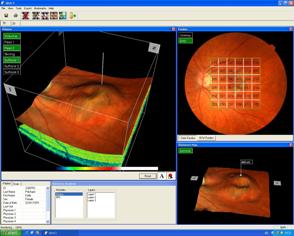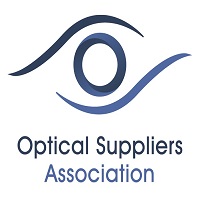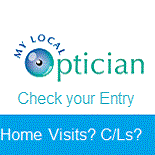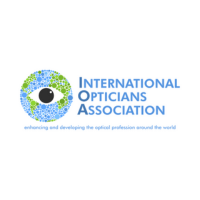Extended Eye Examinations
The standard sight test offered by optometrists have always been, and remain useful for detecting eye diseases such as glaucoma, cataracts and macular degeneration, and systemic disorders such as diabetes, which can be detected by leaking blood vessels seen in the back of the eye within the retina and can cause blindness. However the optometrists have had to rely in the past on ophthalmoscopes to get a reasonable view of the retina.
Andrew Coombes, a consultant eye surgeon at Barts and the London NHS Trust explains. “ It’s been more difficult with the equipment they’ve had to carefully examine the back of the eye, in particular, the whole retina and the point where the optic nerve joins it. The digital imaging techniques now available allow us to examine these vital structures at our leisure. A lot of opticians are embracing this and have exploited its commercial and diagnostic potential.” High-resolution images of the retina at the back of the eye can reveal breaks or abnormalities in blood vessels that might suggest circulation problems or hypertension. Inflammation of the optic nerve can sometimes indicate multiple sclerosis. Small blobs of cholesterol in the retina can indicate high stroke risk. Coombes has received referrals from opticians using high-tech scanning techniques, who have been concerned by swelling at the back of the eye, the sign of a possible brain tumour, or signs of glaucoma (damage to the optic nerve caused by high pressure in the eye).
As we have said in the section on the new role of Optometrists, they are more knowledgeable and have access to more superior and clinical equipment providing a greater in depth understanding of the eye and its weaknesses and future disorders, and this leads to the tell tale signs of general body illnesses and symptoms and therefore the eye becomes the best place to monitor our overall health. Not surprising then that many optometrists, especially the Independents are offering enhanced eye examinations.
Be prepared to pay extra, for these opticians are offering high-tech tests involving digital photography, laser scanning, and an assessment of your eye’s physical wellbeing that can provide an early diagnosis of other health problems too.
Fundamentally changing the consulting room, with the ability to detect eye disorders at an earlier stage than ever before, these services are set to change the way we visit our optometrists in the future. Independents, particularly, are expected to be keen to explore the practice-building potential of investing in OCT (Optical Coherence Tomography) technology.
 Andy Yorke, Managing Director of Topcon, a major player and provider of OCTs in the world explained, “The clinical benefits of this type of technology are incredible. The ability to look beyond the retinal surface into the sub retinal layers presents us with diagnostic opportunities not seen before. 3D OCT provides the clinician with the ability to detect many eye diseases much earlier in their systemic development, such as AMD, glaucoma, diabetes and more.”
Andy Yorke, Managing Director of Topcon, a major player and provider of OCTs in the world explained, “The clinical benefits of this type of technology are incredible. The ability to look beyond the retinal surface into the sub retinal layers presents us with diagnostic opportunities not seen before. 3D OCT provides the clinician with the ability to detect many eye diseases much earlier in their systemic development, such as AMD, glaucoma, diabetes and more.”
He added, “Once we have taken the image of the back of the eye we can virtually peel back the layers of the retina on the screen and look at them individually, rotating and pinpointing specific areas of disease development, and concern. With the additional benefits of colour fundus imaging this technology has delivered terrific benefits in detecting eye disorders earlier and will change the way in which the provision of screening services develop in the very near future.”
The OCT scanning technology costing between £40 – 90K – is offered by Zeiss, Grafton, Haag Streit and Topcon. Leasing companies are already talking of these machines becoming the most popular buy for years but at these prices the Optometrist must make additional charges.



















